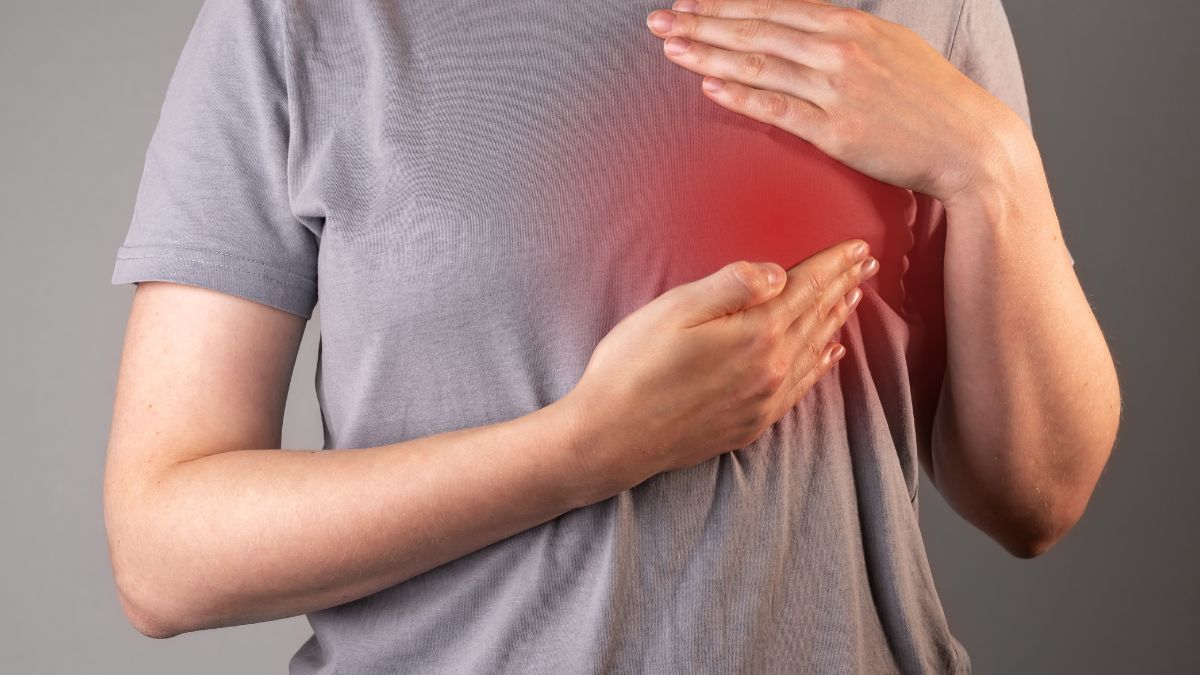- By Prerna Targhotra
- Mon, 09 Sep 2024 05:12 PM (IST)
- Source:JND
Breast Cancer In Teenagers: Among several cancer types, Breast cancer is commonly associated with older women, particularly those over 50. However, this raises the question: can teenagers also develop breast cancer? While breast cancer is extremely rare in adolescents, it is not impossible. Understanding the risk factors, symptoms, and preventive measures is important for awareness.
In a conversation with Jagran English, Dr Manisha Tomar, Senior Consultant, Obstetrician and Gynecologist, Motherhood Hospital, Noida explained common signs, symptoms, prevention, treatment and early detection of breast cancer in teenagers.
Prevalence Of Breast Cancer In Teenagers
Breast cancer in teenagers is exceptionally rare, even in India. According to a report by the Indian Council of Medical Research (ICMR), breast cancer accounts for about 14% of all cancers in women, but cases in younger individuals, particularly those under 20, are exceedingly uncommon. Most teenage breast lumps are benign and result from conditions like fibroadenomas or cysts rather than cancer.
Data from the National Cancer Registry Programme (NCRP) reveals that the incidence of breast cancer rises significantly after the age of 30, with minimal cases recorded in adolescence. For this reason, routine breast cancer screening is not recommended for teenagers unless there is a strong family history of the disease or a genetic predisposition.
Breast Cancer Risk Factors
Although the risk is low, certain factors could increase the likelihood of a teenager developing breast cancer:
Genetic Predisposition: In cases where a family member, especially a close relative like a mother, sister, or grandmother, has been diagnosed with breast cancer at a young age, the risk increases. Certain genetic mutations, such as BRCA1 and BRCA2, are linked to an increased risk of breast cancer, even in younger individuals.
Radiation Exposure: Teenagers who have undergone radiation therapy, particularly to the chest area, for conditions like Hodgkin’s lymphoma may have a heightened risk of developing breast cancer later in life. The risk is cumulative, meaning the earlier and more frequent the exposure, the higher the potential risk.
Hormonal Influence: Early onset of menstruation (before age 12) could slightly increase the risk of breast cancer in later years. This is due to prolonged exposure to oestrogen and progesterone hormones, which play a role in breast tissue development and may be linked to the development of cancerous cells.

Breast Cancer In Teenagers (Image Credits: Canva)
Breast Cancer Signs And Symptoms In Adolescents
For teenagers, it's important to differentiate between normal developmental changes and possible warning signs of breast cancer. Puberty often causes breast tissue to become tender, lumpy, or asymmetrical, but these changes are typically part of normal growth.
However, the following symptoms, if persistent, should be examined by a healthcare provider:
- A painless lump or mass in the breast
- Changes in breast size or shape
- Dimpling of the skin or a rash on the breast
- Nipple discharge (other than milk)
- Inverted or retracted nipple
While these signs are more commonly associated with benign conditions, they should be evaluated to rule out malignancy.
Breast Cancer Diagnosis And Treatment
Diagnosing breast cancer in teenagers follows the same principles as in adults. Imaging tests like ultrasound or mammography are used, though mammograms are generally less effective in younger individuals due to dense breast tissue. A biopsy is needed to confirm whether a lump is cancerous.
Treatment for breast cancer in adolescents involves surgery (lumpectomy or mastectomy), radiation therapy, chemotherapy, or hormone therapy, depending on the stage and type of cancer. Given the young age of patients, treatment plans are carefully tailored to minimise long-term side effects while effectively addressing the cancer.

Breast Cancer In Teenagers (Image Credits: Canva)
Prevention And Early Detection Of Breast Cancer
Since breast cancer in teenagers is rare, there are no official screening guidelines for this age group. However, individuals with a strong family history or genetic mutations like BRCA1/2 may benefit from early genetic counselling or more frequent monitoring. For teenagers who fall into high-risk categories, MRI scans or ultrasounds may be advised to detect changes in breast tissue.
Teaching teenagers to perform regular breast self-exams, even though controversial, can help in developing body awareness. This ensures that they can recognize any unusual changes and seek medical advice promptly.
ALSO READ: Breastfeeding Is Known To Reduce The Chances Of Breast Cancer In Women
ALSO READ: 5 Lifestyle Tips To Lower Your Risk Of Breast Cancer

